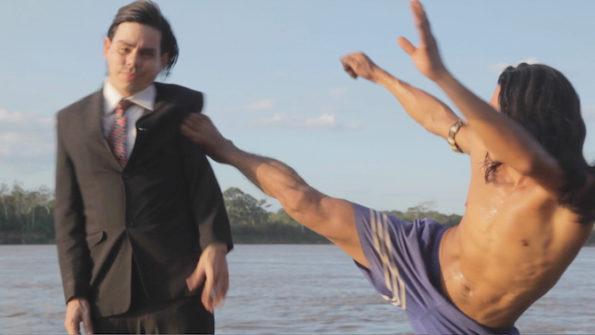Search
To search for an exact match, type the word or phrase you want in quotation marks.
A*DESK has been offering since 2002 contents about criticism and contemporary art. A*DESK has become consolidated thanks to all those who have believed in the project, all those who have followed us, debating, participating and collaborating. Many people have collaborated with A*DESK, and continue to do so. Their efforts, knowledge and belief in the project are what make it grow internationally. At A*DESK we have also generated work for over one hundred professionals in culture, from small collaborations with reviews and classes, to more prolonged and intense collaborations.
At A*DESK we believe in the need for free and universal access to culture and knowledge. We want to carry on being independent, remaining open to more ideas and opinions. If you believe in A*DESK, we need your backing to be able to continue. You can now participate in the project by supporting it. You can choose how much you want to contribute to the project.
You can decide how much you want to bring to the project.

A space acquires the category of territory when it can be defined, be it materially or symbolically, but in the surroundings of a savannah such as the Beni alluvial plains, in Bolivia, the condition of this delimitation becomes intermingled with how we access and share its daily activities.
From these preliminary considerations we are able to comprehend a jungle territory, how this can fragment and give rise to others. The savannah is peerless in how it acts in relation to a dynamic and multifaceted territoriality, shattering the idea of a closed space to give rise to an idea of an articulated space, where there is room for individuals as much as for their various worldviews.
Entering into these territories, under the guise of a project of artists’ residencies like Abubuya[This artist residency project in the river Mamoré, in the Beni savannah region, has been created and produce by Kiosko Galeria of Santa Cruz in Bolivia. Abubuya in the Mojeño-Trinitario dialect means, “to let yourself be swept along by the current of the river Mamoré”.]], organised by the [Kiosko Galería, exposes us to an organised, mutating geographic space. What is more these factors, typical of territorial analysis, are interrupted by the influence of natural phenomena, the human and cultural activities that take place and contain properties, situations, forms and orientations.
On the other hand, in constructing a spatial analysis of a territory, we seek out what are the relations between the landscape and the places that amass endless questions regarding, for example, the identity of groups of humans who coexist with a river. In this way, the vital element is a refuge that forms both part of communication and innovation in a territorial space designated and marked by water. This is why by producing and curating an exhibition of contemporary art titled “Chope Abubuya” we reflect on a landscape, marked, painted, clogged and activated that gathers together some of our perceptions regarding an entire ecosystem.
It is fundamental we rewrite from where we have observed our relation with the territory. A relation formed by the viewpoints of a group of visual artists such as Elkin Calderón, Colombia; Margarita García Faure, Argentina; Marco Godoy, Spain; María Teresa González, Venezuela; Jesús Bubu Grandon, Puerto Rico; Nancy La Rosa, Perú; Kate Levant, USA; Daniel de Paula, Brazil; Fernando Prats, Chile; and the aruma Bolivians, Julio González, Sergio Molina, Cecilia Monroy, Douglas Rodrigo Rada and Raquel Schwartz, in the presence of the El Rosario[[The members of the community El Rosario are direct descendants of the Mojeña ethnic group.]] community. For this, in residing and moving through the spaces presented to us by the river Mamoré, under the context of Abubuya, we gather different interpretations of both a subjective space and an objectivised space. In this case, the topographical framework of the river confronts us with the mood of its diameter, where we speculate about the meaning of the landscape. And what’s more, the synergy produced in an unexplored space inevitably brings us closer to different social realities that can lay the foundations for singular actions that could be carried out the future.
The journey along the flow of Mamoré doesn’t just confront us with an exuberant nature it also presents us with a variety of images, textures and sounds of locations and ways of life. Now if we combine this space with the dialogue constructed by the participants of Abubuya, the result is an exhibition of contemporary art that goes beyond what the thoughts and artistic tales that have arisen from it can recount.
On the face of it the immensity of the Beni plains contains various features that establish a platform from which to name and examine its luxuriant geography. This dynamic exploration in short visualises the geographical relation that it houses and undoubtedly interacts with this human territoriality in constant flux.

Rodolfo Andaur is a curator and manager and has therefore carried out several projects whose main objective is to ‘desertify’ unpublished stories. He is also constantly invited by recognized institutions to organize eco-territorial trips in different places in Latin America
www.rodolfoandaur.cl
"A desk is a dangerous place from which to watch the world" (John Le Carré)